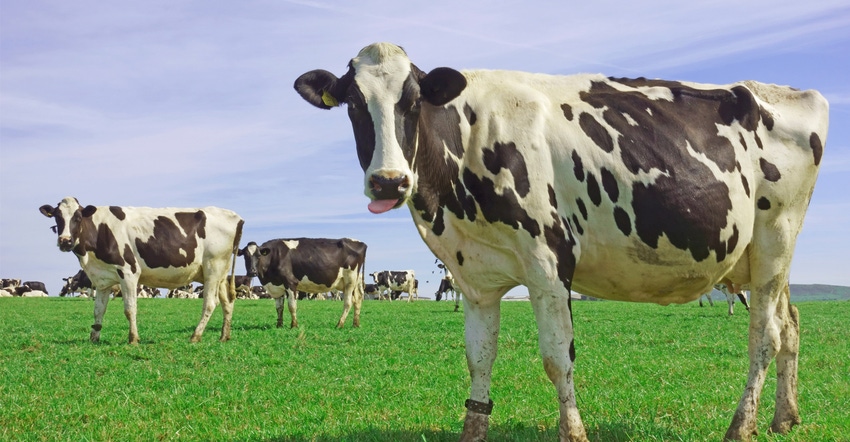
During World Dairy Expo, Boehringer Ingelheim introduced a new treatment for cows called Bovikalc Dry. It is a mixture of minerals administered at dry-off that temporarily reduces appetite, which leads to less udder swelling and increased cow comfort.
“The purpose of the dry period in dairy cows is to provide rest for the cow,” says Dr. Curt Vlietstra, veterinarian for Boehringer Ingelheim. “She needs rest, but her udder needs rest as well.”
Bovikalc Dry is given orally via two boluses at dry-off or eight to 12 hours before the last milking.
“It helps reduce the amount of milk produced at dry-off by inducing a slight and temporary metabolic acidosis,” Vlietstra said.
Bovikalc Dry causes a reduction in the cow’s appetite, which leads to reduced feed intake that results in lower milk production.
“We use urine pH to tell that it works very quickly, and a day-and-a-half later, the acidification ends and her pH goes back to normal,” Vlietstra explained. “We don’t want to acidify her for very long.”
He said producers will be able to see the difference right away in cows that receive the boluses compared to those that do not.
“Because the cow is comfortable and eating less, they lay down 85 minutes longer per day at dry-off,” he said.
Boehringer Ingelheim conducted a study on cows at dry-off where some received two Bovikalc Dry boluses and some did not. Cows were giving 55 to 60 pounds of milk per day at dry-off.
Gradual dry-off
“High-producing cows will leak at dry-off, but the incidence of milk leakage in control cows was 76.7%, and in cows that received the boluses, the incidence of milk leakage was reduced to 32.1%,” he said.
According to Vlietstra, the dry period typically lasts 30 to 60 days, “usually closer to 60 days.”
Gradual dry-off is beneficial for udder health vs. abruptly drying off cows.
“However, more than 80% of herds today dry off cows abruptly,” Vlietstra said. “That means they are milking that cow two or three times a day, and tomorrow, they’re not milking that cow at all. It would be fantastic if we could just turn off the milk flow, but of course, we can’t.”
In addition to preparing to give birth to a calf and begin a new lactation, the dry period allows a cow to rejuvenate milk-producing udder tissue.
“The dry period is an excellent time to resolve subclinical mastitis,” Vlietstra said. “There is less risk of residue in the milk and less labor involved.”
Vlietstra said dairy farmers may be familiar with Bovikalc — a product that is given to cows at freshening that helps prevent them from getting milk fever or a displaced abomasum.
“Bovikalc has been around for 10 years,” he said. “Ingredients in both products are similar. A fresh cow is given one bolus, and then 12 hours later they receive a second bolus.”
More information about Bovikalc Dry or Bovikalc is available by talking to your veterinarian.
About the Author(s)
You May Also Like






